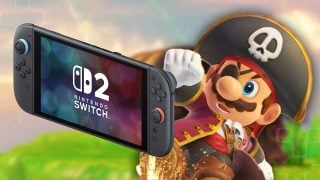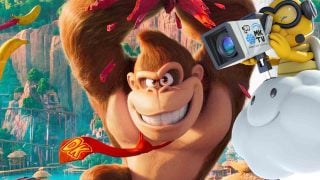You can now listen to our review if you prefer!
It’s humbling to remember that we are still very early into 2024. Nintendo is playing it pretty cool right now, but the prospect of bigger announcements looms just out of reach. Still, it’s the chill of February, and we have a Mario game to warm us by the fire. And not just any Mario game, but a remake of the somewhat obscure Mario Vs. Donkey Kong, a game that, until now, was confined to the Game Boy Advance (or the 3DS if you were a Nintendo Ambassador—how’s that for a throwback?). It may seem an odd title to remake, but in the winter months, a compact pick-up-and-play title like this can be a welcome companion.
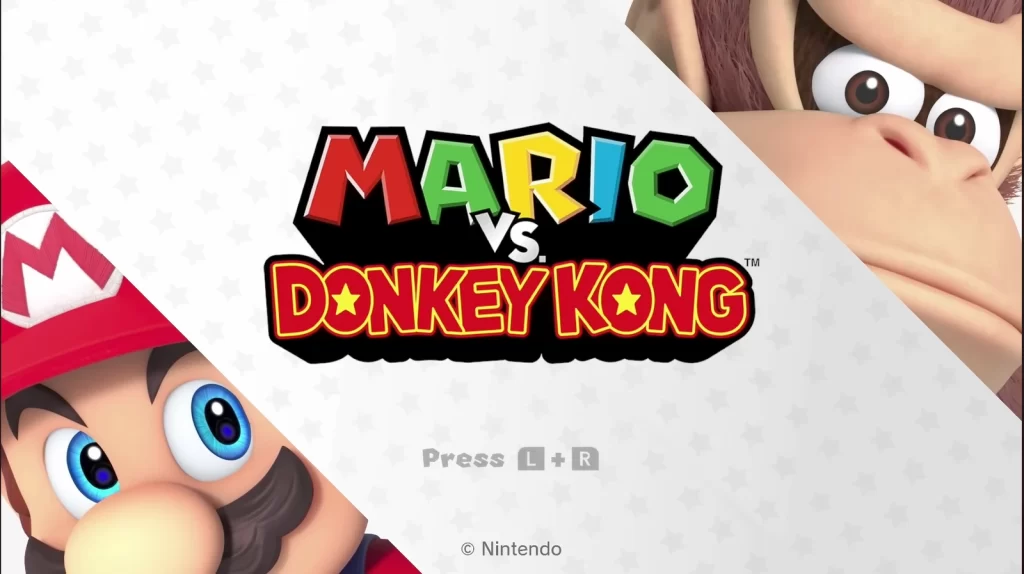
Classic Man vs Beast Rivalry
While it’s not immediately clear why Nintendo chose to give Mario Vs. Donkey Kong a new coat of paint, its vibrant primary colors and overhauled lighting and shadows look fantastic, especially on the Switch OLED screen. The game shines, especially when running in handheld mode at a smooth 60 frames per second with 720p resolution, a far cry from the greased-up, blurry look of the Game Boy Advance original. As you begin to play the game, however, the clarity starts to come through: This is a welcome look back to a simpler time.
Let’s A Go!
Nintendo’s early arcade game philosophies have created a timeless feel evident in the original Donkey Kong and its Game Boy sequel, from which Mario Vs. Donkey Kong borrows its mechanics. You enter a stage, observe the various obstacles ahead, along with only the essential collectibles, a few colored switches, ladders, some strategically placed enemies, and an exit door leading to the second part of the stage, completing the level. Simple. Instead of an exit door, the prize upon completing the latter half of a level is a Mini Mario toy, the latest commercial gadget that Donkey Kong literally rushes out of his house to purchase in the game’s hilarious opening.
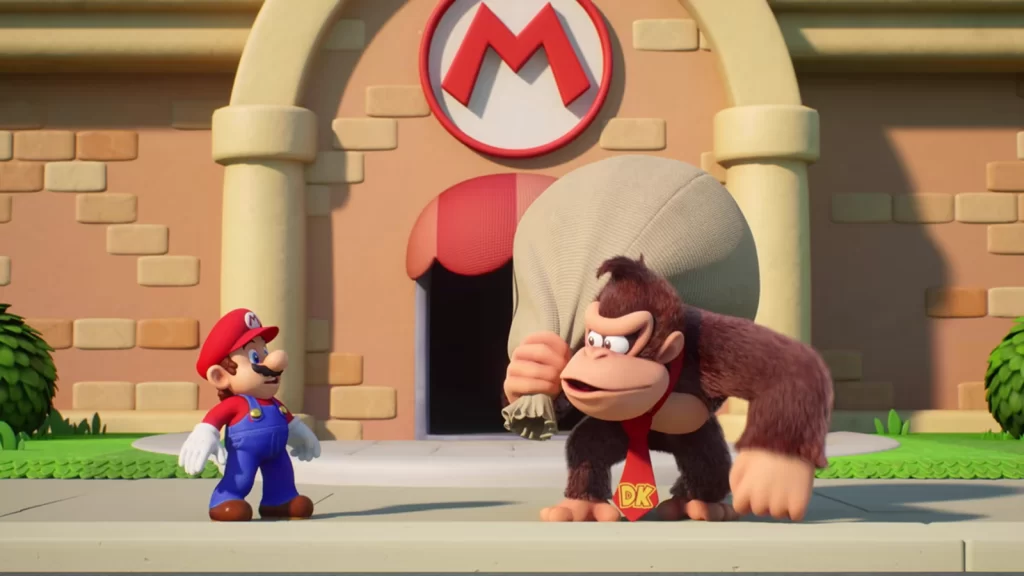
However, he finds himself short at the local toy store and opts to kick down the door of the nearby toy factory, stealing every Mini Mario fresh off the assembly line. Mario, conveniently nearby (because apparently, he really appreciates his own likeness in toy form and oversees toy production?), gives chase to the fleeing DK. Simple setup, simple game premise, simple execution. Nothing complicated here, to be sure.
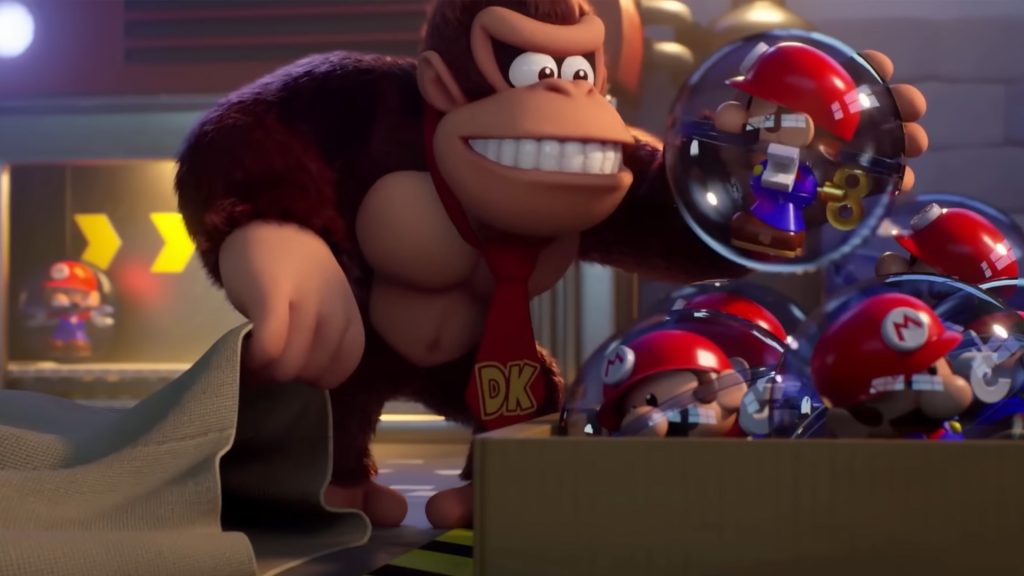
Donkey Kong commits crimes
It’s all about that classic gameplay
Mario, having just changed into his running shoes, apparently, chases DK through 8 worlds this time instead of the original’s 6. And in them, he utilizes a surprisingly acrobatic moveset. What Mario lacks in speed, he makes up for in sheer jump options. The levels are designed to make use of every single one of them too. You, of course, have a standard jump, but you also get Super Mario 64’s side flip and an overhead projectile-immune handstand that transitions into a high jump if you press the jump button twice in a row. Mario Vs. Donkey Kong is a two-button game. In addition to jumping, you’ll also pick up objects like garbage cans to throw at enemies, which comes in handy for the boss fights against Donkey Kong at the end of each world, or even enemies themselves ala Super Mario Bros. 2. This is also how you grab a level’s key, Mini Mario, and the toybox at the end of each world’s Mini Mario stage.
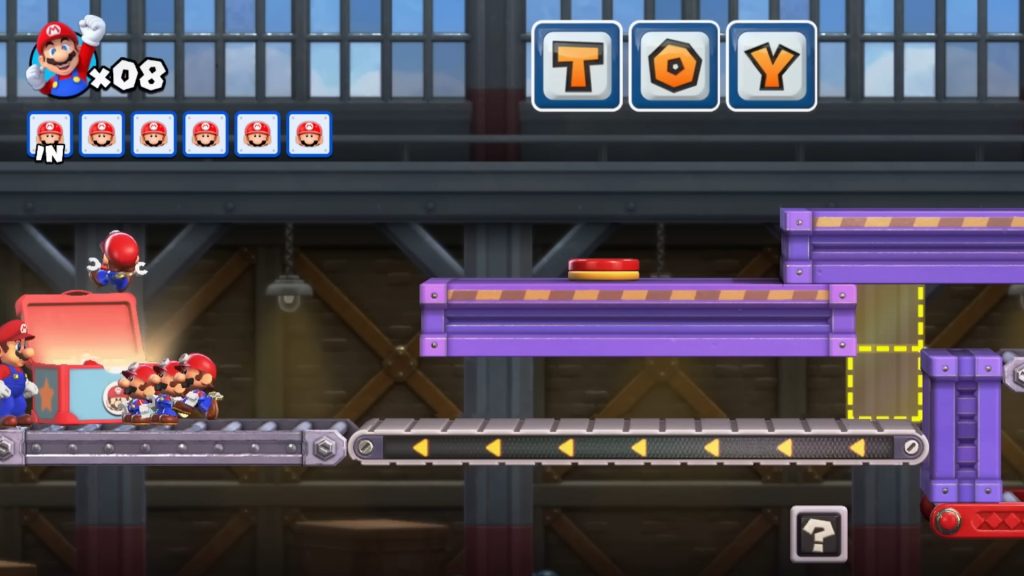
Time to go home, little fellas!
For the brave, you can find one-ups sprinkled in dangerous spots as a small challenge. The hammer item from the original Donkey Kong returns as the game’s sole power-up as well. No Tanooki suits or Elephant Mario’s here. It’s a back-to-basics approach this time.
The game’s worlds are similarly easily explained. You start in the city before transitioning to a jungle, a volcano, a haunted house, etc. The remake includes two new themes: A theme park called Merry Mini-Land and an icy mountain referred to as Slippery Summit. It’s in these two worlds where we receive entirely new mechanics that weren’t in the original game. These are smoothly integrated, from pockets of air that can be switched on or off to slick ice platforms that can be slid on to duck under platforms or move keys. I found them to be welcome additions to the other worlds’ existing gimmicks like the Metroid-esque rising lava of Fire Mountain and climbable vines and monkey tails of Donkey Kong Jungle. I also found the challenge of both new worlds to be slightly higher than that of the original worlds, if not on par with them. A few colored switch puzzles involving the fans in Merry Mini-Land had me thinking a little longer than in other levels, and the portal box puzzles in Slippery Summit were quite intuitive.
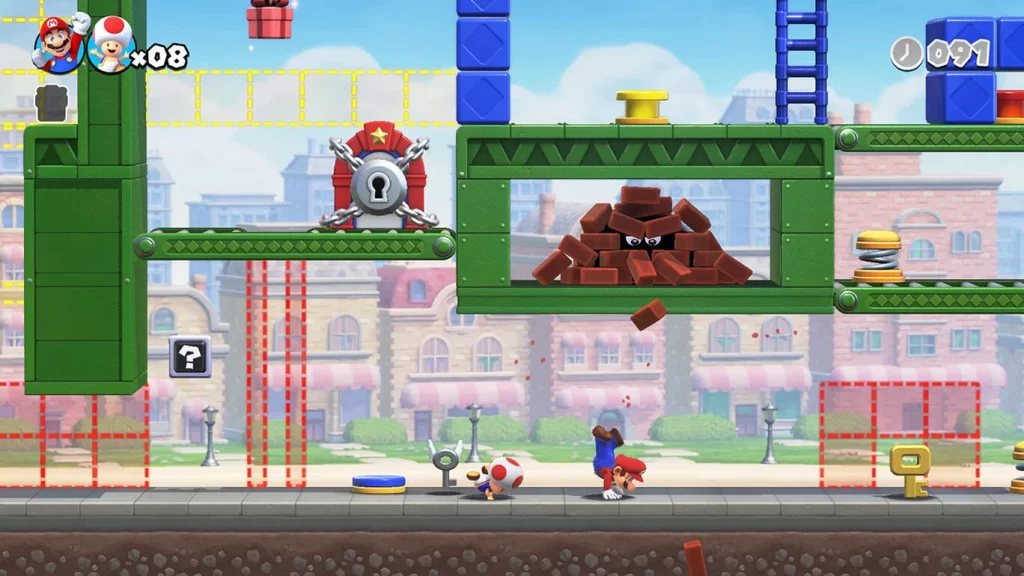
On the subject of challenge, Mario Vs. Donkey Kong offers a fairly light romp. It actually serves as perfect first video game fodder for a younger gamer but functions just fine as a nostalgic arcade puzzle platformer for the experienced gamer too. It’s that classic multi-generational Nintendo appeal on full display. I never found myself bored or proclaiming that a stage was just there to be ran through with no thought.
Admittedly, my own patience with a few of the slower puzzles, such as waiting on Bob-Ombs to spawn so they can be thrown at bricks or waiting for an enemy to move into position so I could ride them across a gap, was thinning a bit by the end of the 10-hour chase. Each stage is on a timer after all, and in the new Time Attack mode, I found such obstacles mildly frustrating as there is no way to speed through them. This design decision seemed an odd one, especially given that most levels encourage you to use your secondary jump options to cut time off runs.
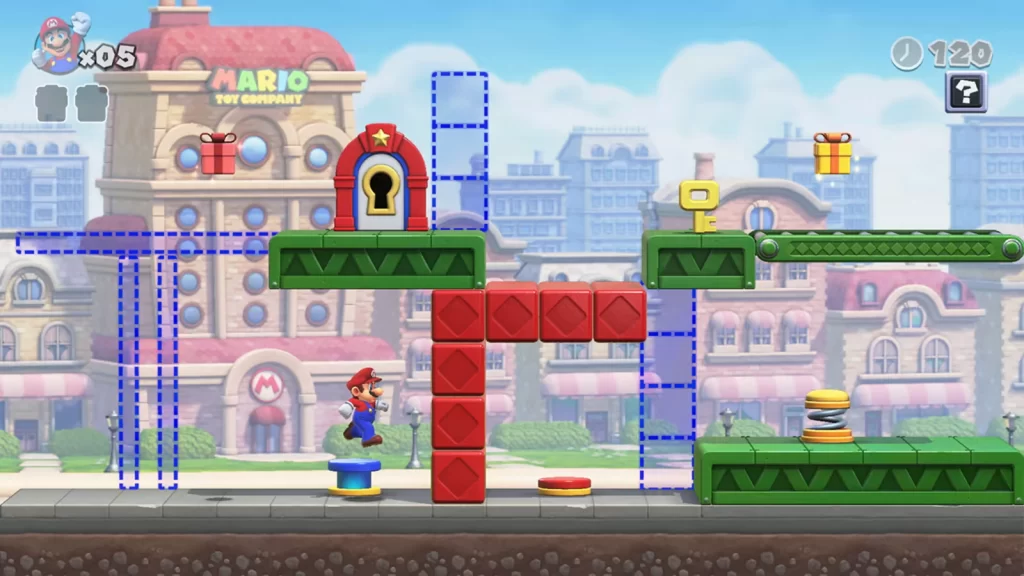
I also found the addition of a time attack mode to be interesting, given that the original game’s stage-specific score count was removed. This means that aside from grabbing every colored present, making it through the Mini Mario stages with every Mini Mario accounted for, and finishing every boss fight without getting hit, there are no accounts taken into score. The streamlining of it makes sense while removing a bit of the arcade feel. It’s down to personal preference, something I would also say about the decision to still use lives and one-ups, which the game directly addresses by giving the option to negate them entirely for hit points in Casual Mode. Every decision made in this regard seems meant to make the experience more approachable. The same thought process goes for the welcome addition of the new two-player co-op mode, which only served to make the same single-player levels more manageable. As a cool touch, two players can utilize a single pair of Joy-Cons with each held sideways for this mode. It is nice to continue seeing Nintendo try to make Mario games more user-friendly.
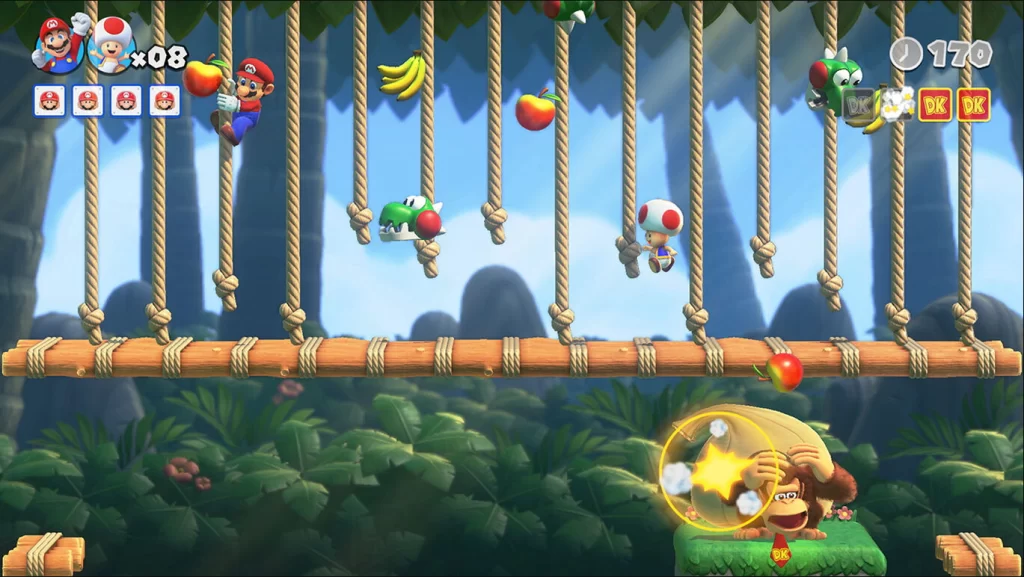
More than just a remake
I want to praise the effort Nintendo has put into unifying the game’s theming for the remake. In the original Mario Vs. Donkey Kong, enemies appeared as their normal Mushroom Kingdom selves, as if Donkey Kong had paid them more than Bowser that day and hired them on. In the remake, those same enemies are now toys, just like the Mini Marios. While it may seem like a small adjustment, the extra thought and care put into the world-building is very much appreciated. Plus, the character models are just too cute.
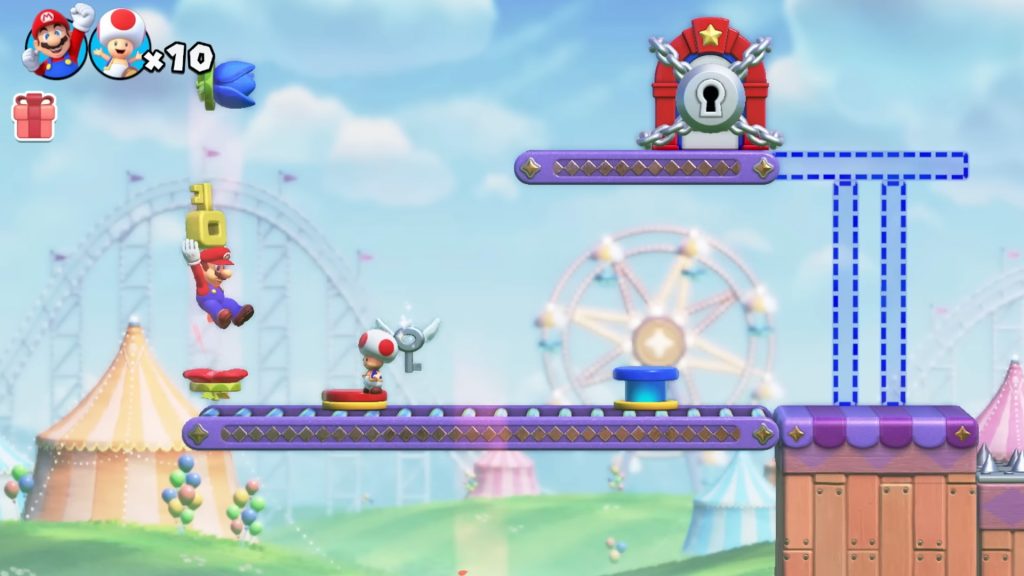
Toad joins the party!
Adding Toad as a playable character for the two-player co-op mode was also a nice touch, as Toad already appeared in the story. It was also a treat to experience the game’s usage of HD rumble. Not only was it used in gameplay to emphasize picking up or throwing objects and enemies, but it’s also used during cutscenes as well. The HD rumble even shakes precisely to mimic Mario twisting a key when unlocking a door to proceed to the next part of a level. These are only small examples of how exactly the HD rumble feature is utilized in the game. The attention to detail across the board is wonderful, but the game’s extensive use of HD rumble was a welcome surprise.
The most contentious aspect of the game is by far its price point. I know many are hesitating to download or rush out to their local store and buy the game for $50, especially when it lacks the level editor of its sequels. Talks of the game being valued only for its branding have increased since the initial reveal last year. The bottom line is, the length of the game is shorter than the average Mario platformer. It was a handheld title after all. So why the expense?
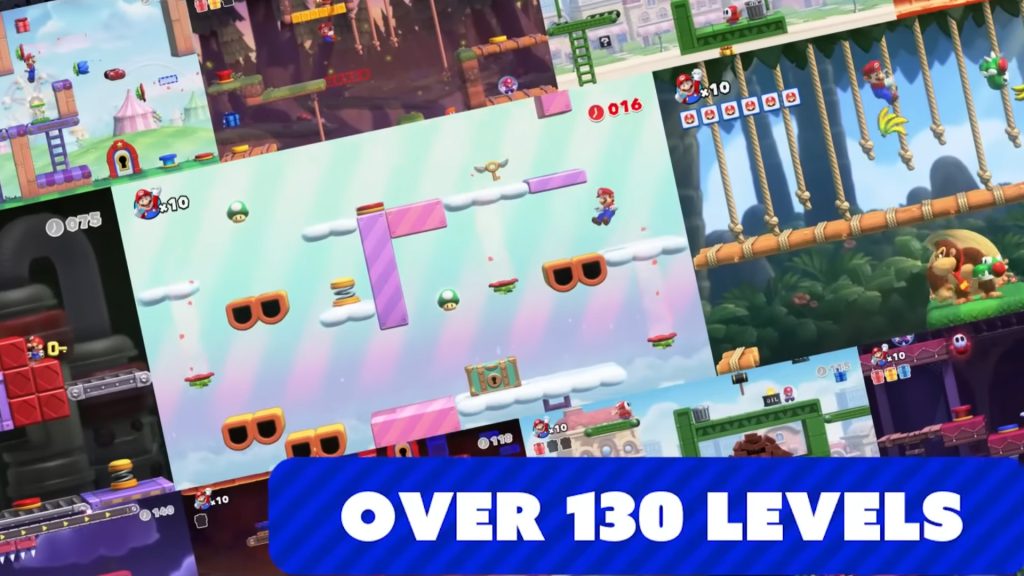
130 levels ain’t that bad!
The addition of two new worlds, two new modes, and a fresh coat of paint do add to the value of the game. The original Mario Vs. Donkey Kong was priced at $30, the normal price point for a Game Boy Advance title in 2004. This is slightly cheaper than, say, Pokémon Fire Red/Pokémon Leaf Green, which was in the most expensive tier for a Game Boy Advance title at $34.99. Looking at today, the typical Nintendo price point is $60. $10 below that at $50 is similar to the gap between the aforementioned Game Boy Advance pricing tiers. Though the average modern Nintendo game runs longer than 7 hours, I can see and understand why Nintendo has priced Mario Vs. Donkey Kong where it has. I can also understand the hesitancy in the current economic climate to purchase the game. It truly comes down to personal preference.
A fun-filled blast from the past
Mario Vs. Donkey Kong is a smooth-controlling, good-looking puzzle platformer that chooses not to overstay its welcome. Its shorter length is appropriate given the style of gameplay, potentially repetitive gameplay loop, and how the levels are structured and designed. Some of the design decisions once in the stages made my time with the game a bit cumbersome, but I felt these issues were merely a minor annoyance. I did not run into any graphical or control issues in my time with the game. And for those who stick with it, there is an entire second set of “Plus” levels after completing the initial 8 worlds and a separate set of expert challenge levels. I found the game to be a fond reminder of the simplicity of arcade game design and the era of Nintendo handhelds that saw numerous pick-up-and-play cult classics. Returning to the original Mario Vs. Donkey Kong and not its Mini Mario-focused touch screen-controlled sequels potentially also creates a new jumping-off point for a future sequel in the same style.
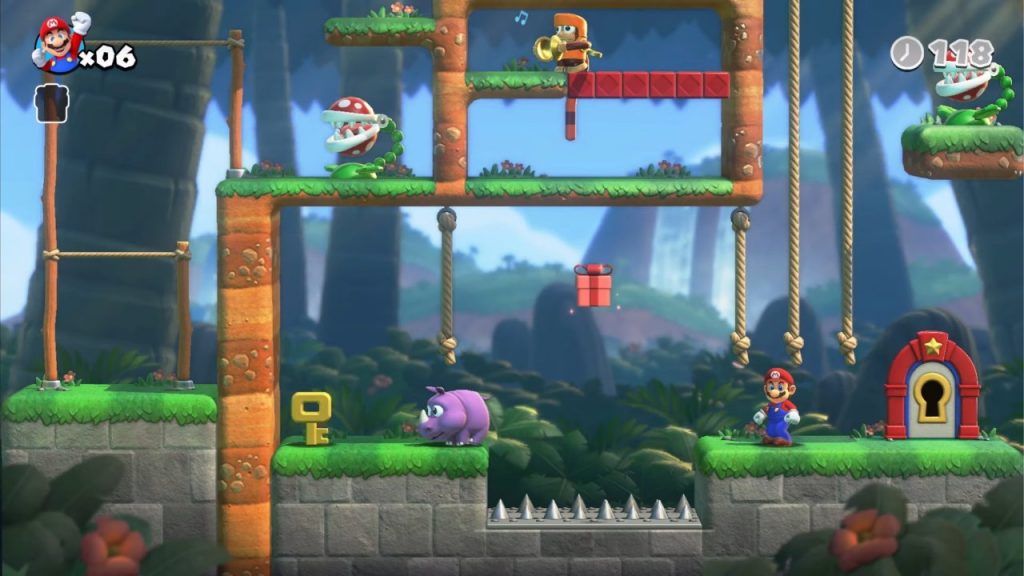
As we move forward into a brave new world of huge Nintendo games with epic lengths, it’s nice to recall that once upon a time, they just made fun games with quirky designs. We’re so used to characters like Mario and Donkey Kong that it’s funny to think about how almost universally accepted this tale of a capitalistic plumber chasing a gorilla wearing a tie through an entire country’s worth of locations all just to retrieve some toys is. I smiled typing that out, and if you smiled reading it, Nintendo’s on to something.
Leave a Comment